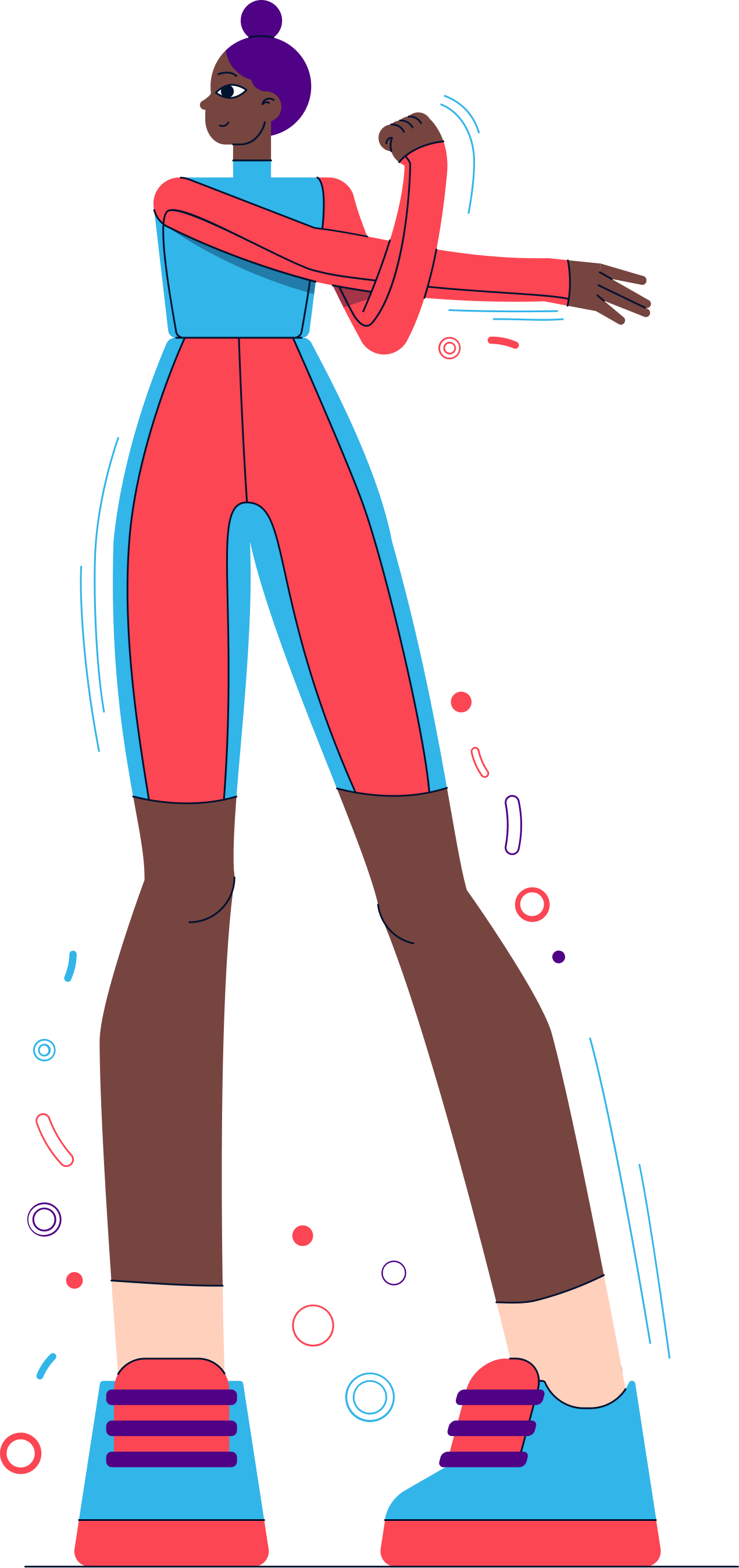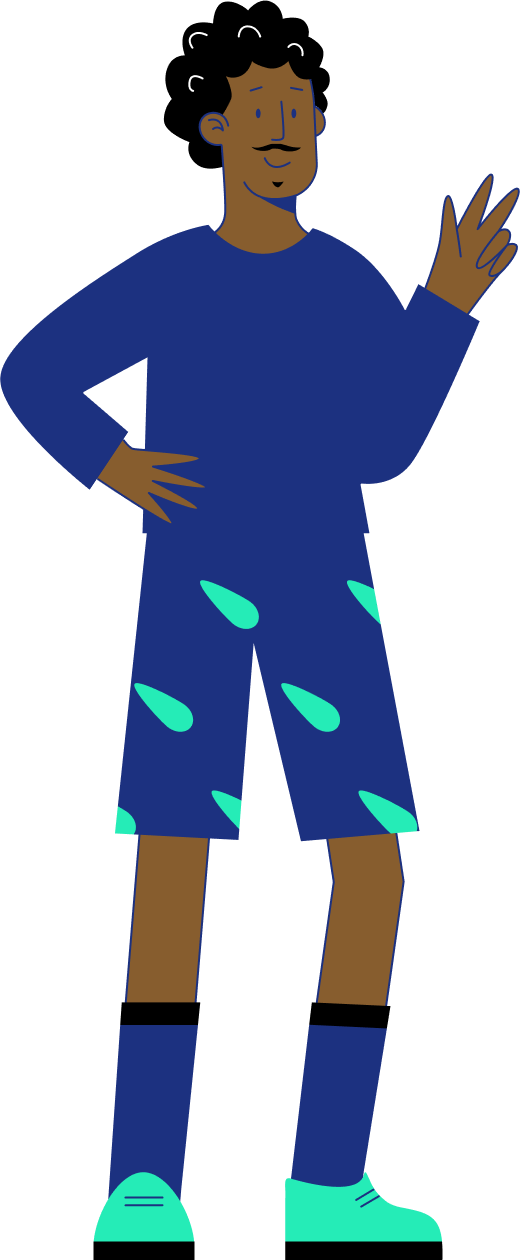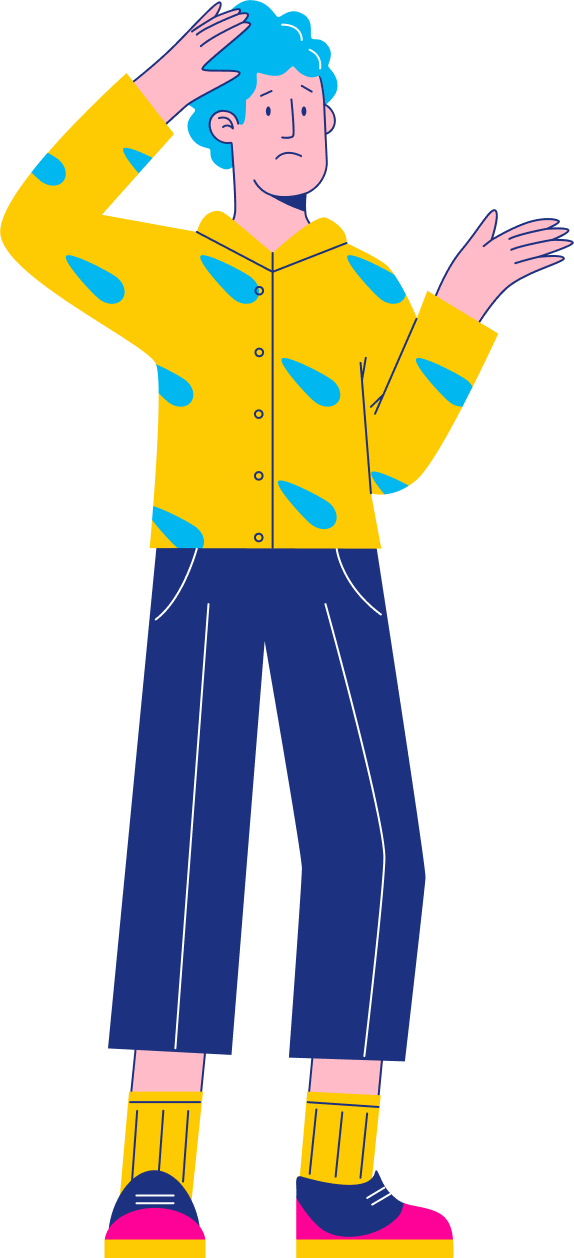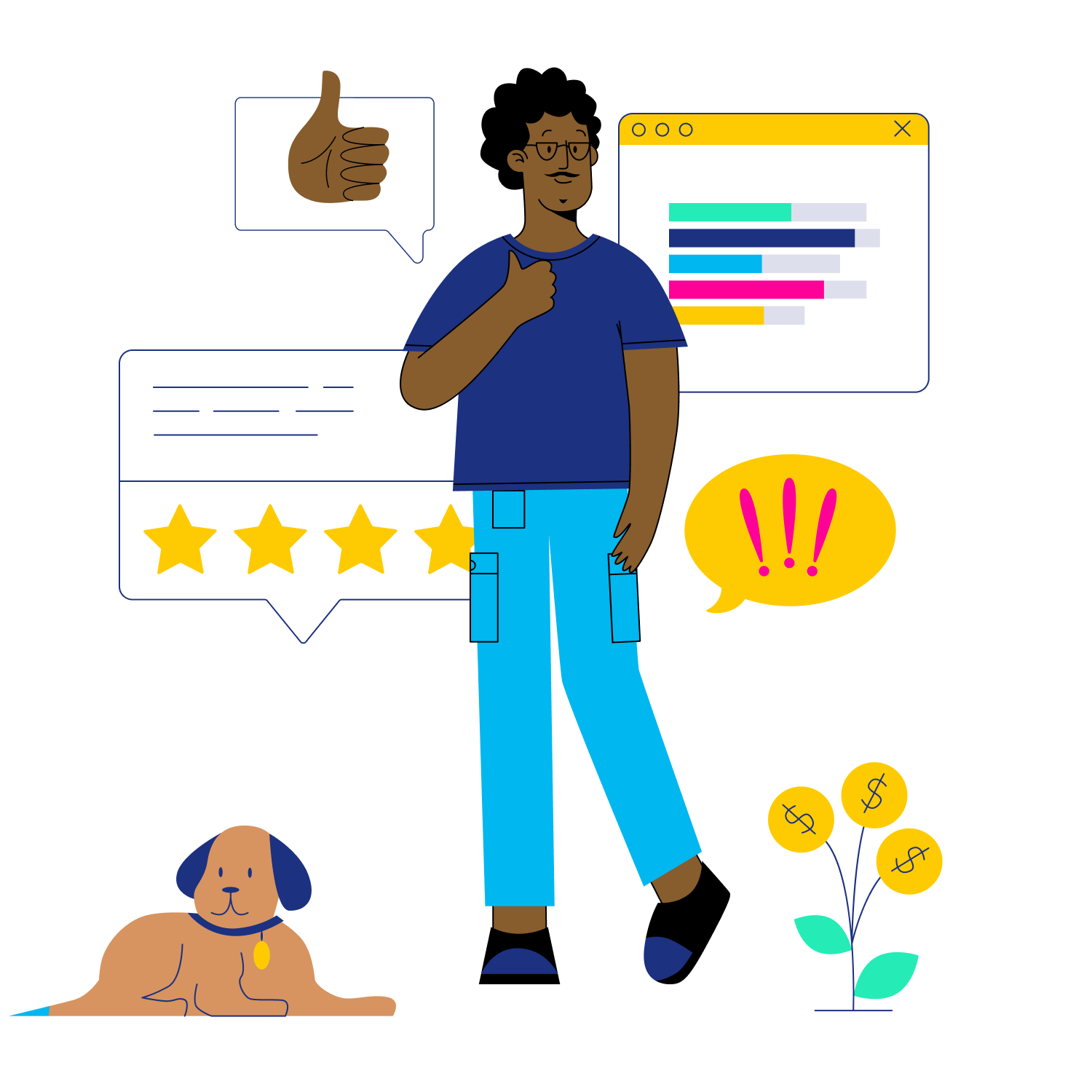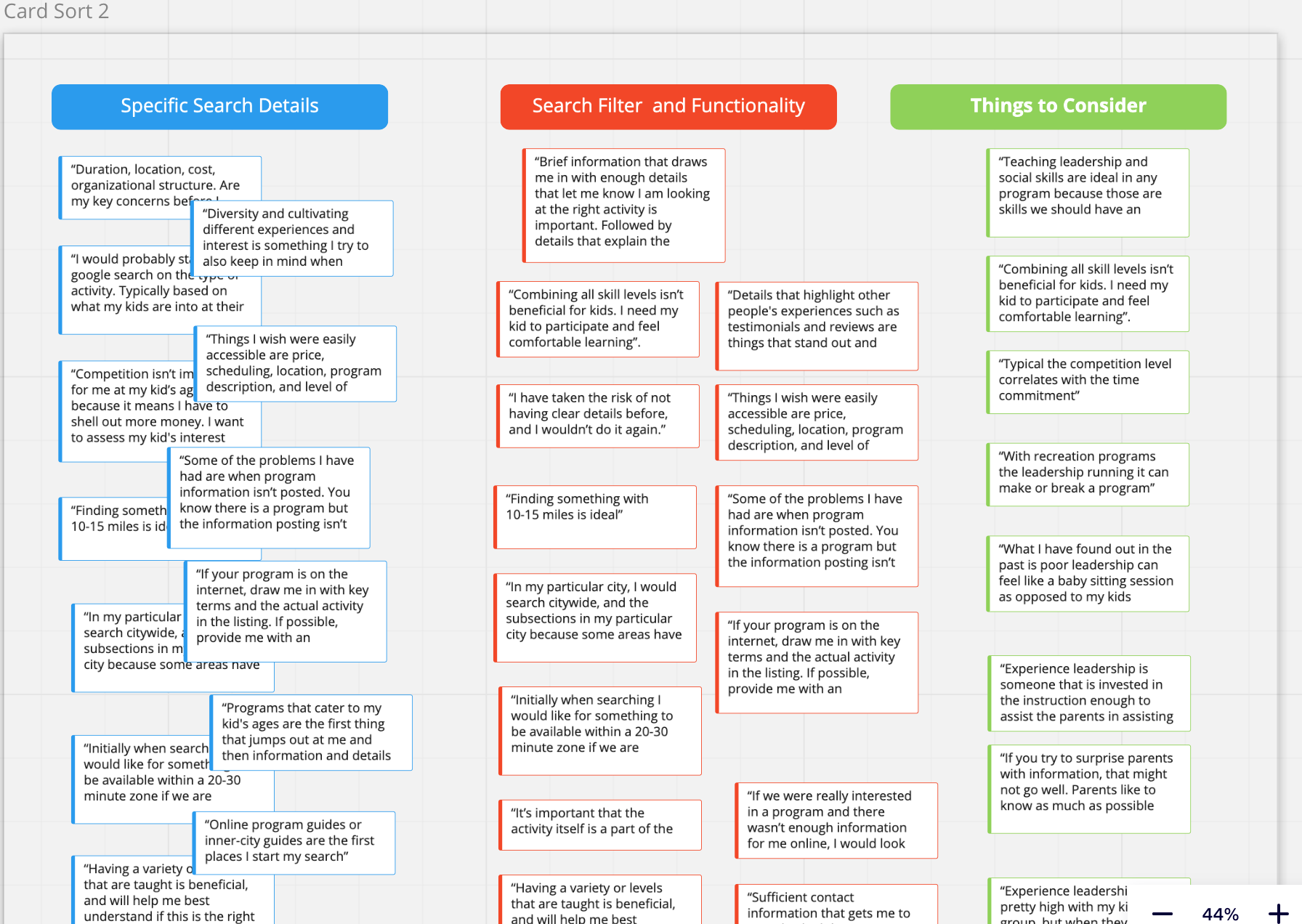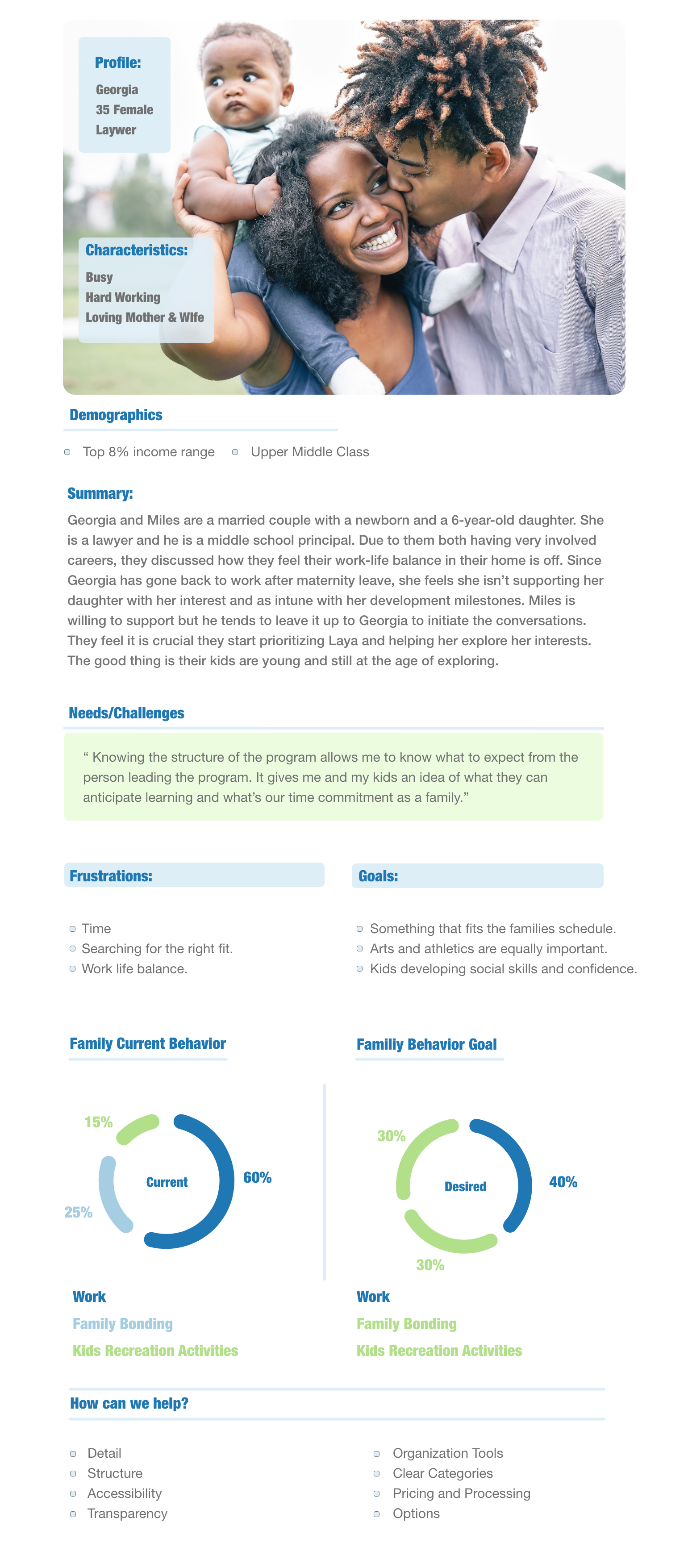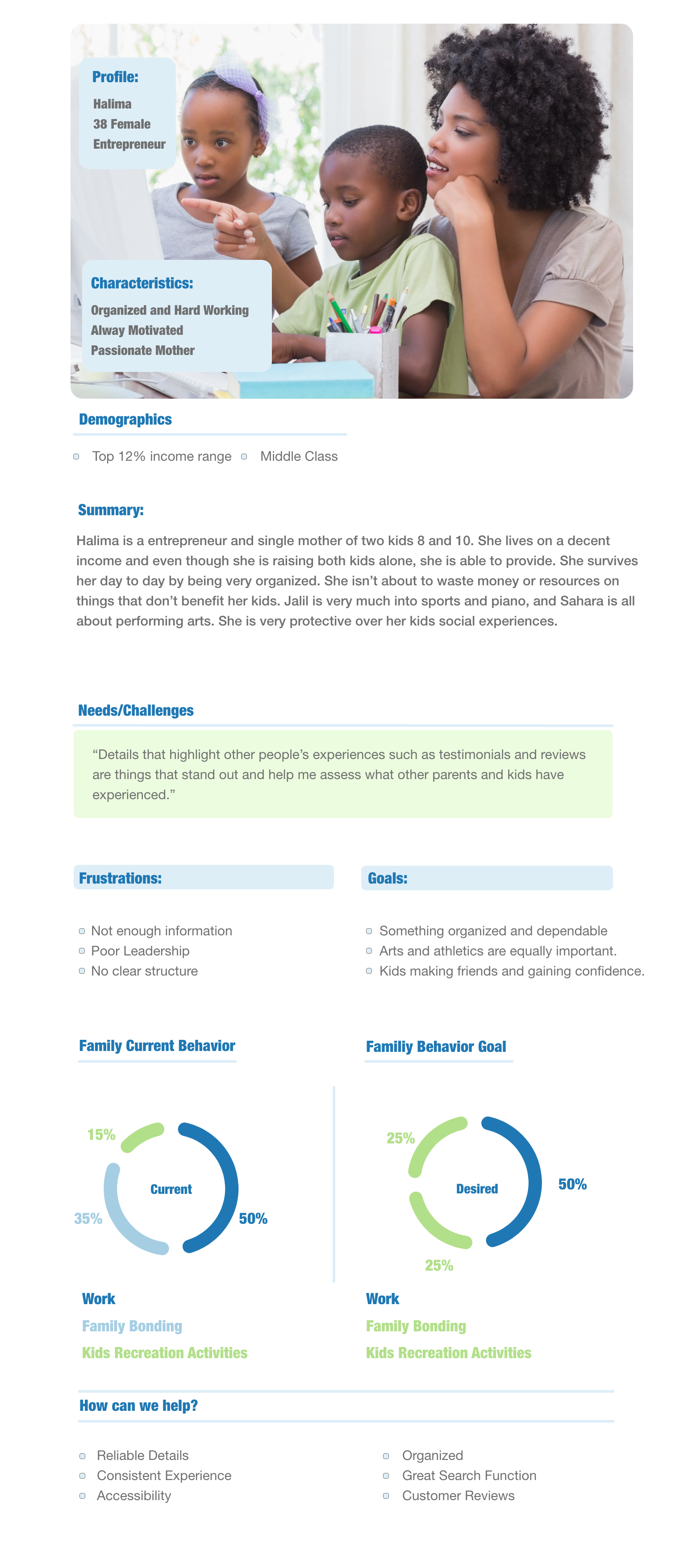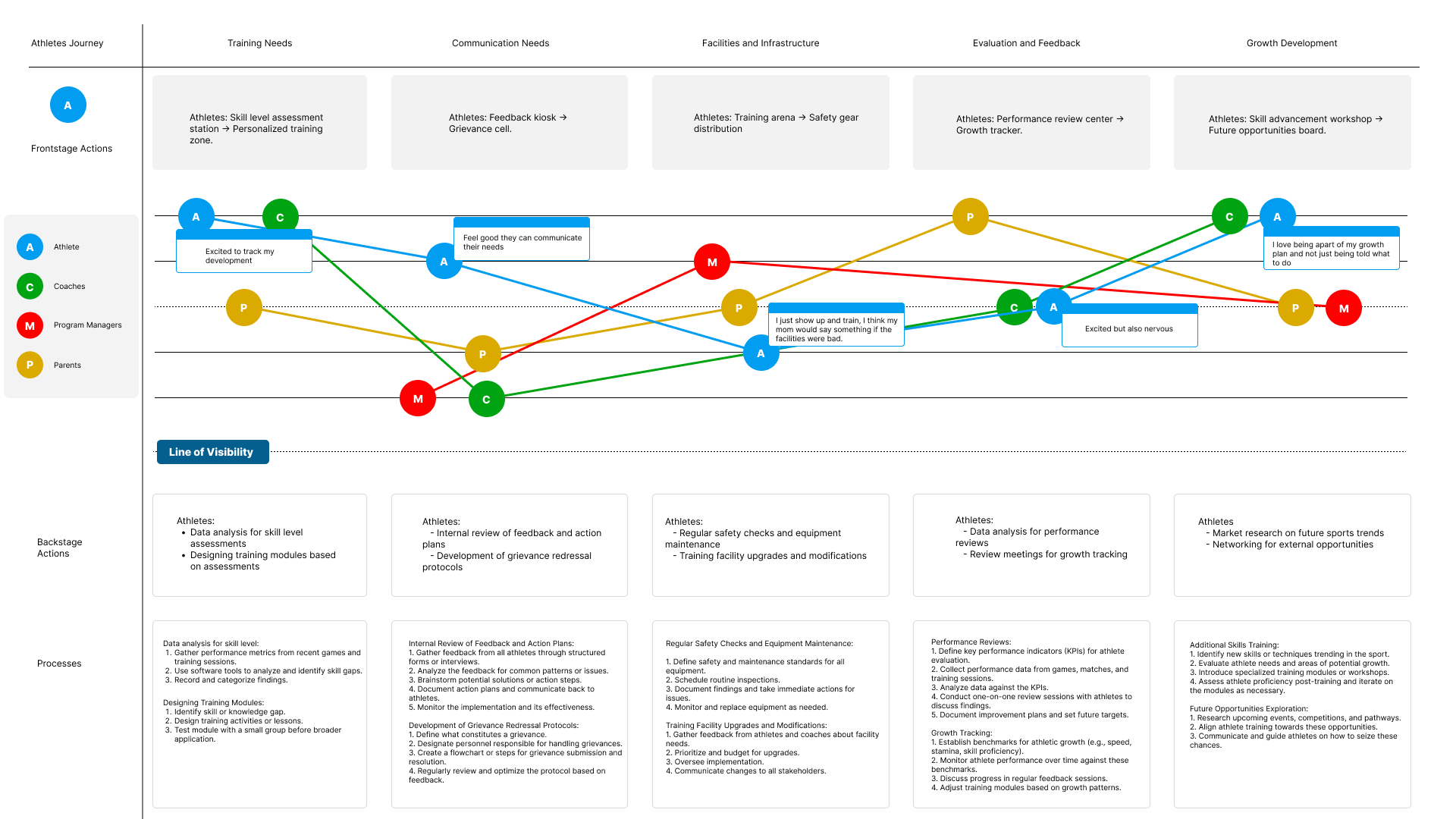Recreational Program Information Channel and Systems Analysis
Executive Summary
Our research endeavors to uncover the obstacles that parents encounter while searching for local recreation programs for their children nationwide. We aim to comprehend the methods used by parents to locate these programs and the issues they face in finding the appropriate programs for their children. Looking at this from a broader perspective, local recreation programs play a vital role in fostering trust and social skills in children. However, with the present decline in participation, many children are missing out on the chance to enhance their self-esteem and problem-solving abilities.
From a business standpoint, our objective is to develop a recreation application that addresses these challenges and connects parents with suitable programs and facilities. By understanding the pain points and needs of parents, we can create a user-centric platform that improves program discovery, simplifies registration, and enhances overall user satisfaction.
Ultimately, our goal is to create a successful recreation application that not only benefits parents in their search for programs but also supports the growth and development of children nationwide. By addressing the challenges faced in finding local recreation programs, we aim to provide children with opportunities to enhance their self-esteem, problem-solving abilities, and social skills, ultimately contributing to their overall well-being.
A staggering 70% of children in the United States abandon recreational sports by the age of 13. This trend is primarily due to the escalating competitiveness of youth sports programs. While these competitive programs can be highly beneficial, it is imperative to provide accessible options that balance competition with fun physical activity. With children's lives becoming increasingly absorbed by electronic devices, which often promote sedentary lifestyles, it is essential to provide options that are inclusive, engaging and do not discourage children who are less competitive, by giving them a chance to participate in high-calorie burning activities that are enjoyable.
Non-participants by age 13
70%
Quantitative Surveys
We conducted a qualitative research study with a sample of 4 stakeholders and 5 parents users to gain a deeper understanding of their attitudes, behaviors, and opinions. Through the use of web surveys and questionnaires, we collected valuable data from these participants.
Analyzing the data allowed us to gain insights that helped us identify key objectives for further qualitative testing. By aligning our future testing efforts with the feedback and needs expressed by our stakeholders and users, we were able to ensure that our testing was focused on addressing the specific needs and requirements of the business and users.
Objectives
"Understand how parents find these programs and the challenges they face in choosing the right ones."
Develop a recreation app that solves these challenges, helping parents find and register for programs easily while boosting user satisfaction.
Our app will highlight rental facilities, helping parents find the perfect spaces for their children's activities. By simplifying booking and enhancing search features, we offer a complete solution for their recreational needs.
Methodology
In this study, we will employ a combination of qualitative testing methods, including Zoom video call interviews, semi-structured interviews, contextual inquiries, and various ideation activities. These methods will allow us to gain a comprehensive understanding of our customers' needs, empathize with their concerns, and clearly define our objectives.
Core Qualitative Testing Done:
Usability Test - Competitive Analysis
Semi-Structural Interviews
Contextual Inquiries
Users
Psycho-Demographics
Parents who are between the age of 25-50
Parents with Kids 2-16
Various social-economic backgrounds.
Male/Female mix
Usability Test
Participants
Grocer
Mother
Age: 39
Female
Engineer
Father
Age: 43
Male
Accountant
Father
Age: 49
Male
Marketing
Father
Age: 34
Male
Our usability test will employ Qualitative Testing methodologies, which involves conducting 30-45-minute Zoom video call interviews with participants. During the test, we will observe and gather data on the participants' interactions and responses while searching for recreational programs on a local municipal website.
Defined Success Steps:
Community Tab
Digital Activity Guide
Registration Link
Scroll down to see listings
Select a sport or activity
Review options and select interest
Sign Up
Registration Steps
Graded Steps
User’s who pressed the “Community Link”
User’s Who navigated to “Registration”
User’s who successfully selected a activity
User who completed signed up process
User’s who found “Digital Activity Guide”
User who scrolled down to see listing
Users who reviewed specific activity descriptions.
System Usability Scale (SUS)
Grocer
SUS Score 70
Good
Usability Test: Pass
Engineer
SUS Score: 72.5
Good
Usability Test: Fail
Accountant
SUS Score: 7.5
Awful
Usability Test: Fail
Marketing
SUS Score: 60
Poor
Usability Test: Fail
Key Insights
Only 25% of users completed the process end-to-end.
75% of users found the listing to be unclear or disorganized.
None of the users utilized the search filter or even discovered it.
City municipal websites often have a lot of information to present, and the organization of that information is influenced by local government funding and the recreation department's structure.
It's important to consider how new tools integrate with existing information on the website rather than just focusing on what the software can do on it’s own.
Clear navigation is crucial to prevent user distraction and guide them through the process.
We learned that by improving the streamlining of the booking process by optimizing search and filtering functionalities, we could make it easier for parents to find and secure appropriate programs and facilities for their children's activities. This approach helped us gain a deeper understanding of customer needs, empathize with their concerns, and better understand their objectives and goals.
Semi Structural Interviews
Interview Approach
Our semi-structured interviews were conducted with three participants to gather in-depth information about their process for searching and identifying problems and any pain points they experience when trying to find the right fit for their family. This information will help us understand the participants' perspectives and experiences, which will inform future improvements to our products and services to better meet the needs of our target audience.
Each video was recorded and analyzed.
Quotes were extracted based on:
pain points
user needs
possible concerns
additional things for consideration
Sample Quotes
“I would probably start with a google search on the type of activity. Typically based on what my kids are into at their age like arts and crafts, or swimming programs.”
“Duration, location, cost, organizational structure. Are my key concerns before I begin my search”
“Having a variety of levels that are taught is beneficial, and will help me best understand if this is the right program for my kid.”
KEY FINDINGS
The empirical findings from our results-based analysis highlight key trends and patterns derived from our comprehensive examination. Our rigorous analysis of the qualitative data obtained through semi-structured interviews provided invaluable insights into the search and problem-identification processes of participants, as well as the challenges they encounter when seeking suitable options for their families.
By leveraging these findings, we have uncovered strategies to optimize program participation rates, enhance user satisfaction levels, and increase the visibility of facilities. Furthermore, our objective of fostering community engagement within the application has been greatly informed by the participants' shared experiences, recommendations, and feedback.
Through this data-driven exploration, we have successfully identified prospective solutions and innovative approaches for constructing an application that effectively addresses the identified issues. Moreover, the interviews have afforded us a comprehensive understanding of how to structure and alleviate the pain points experienced by users, ultimately resulting in the development of a more user-friendly and impactful service model within the product.
Contextual Inquiries | Card Sorts
Card Sorts Exercise
Semi-structural interview data was extracted into quotes, which were used in a card sorting exercise.
Participants were asked to match the quotes under the objective that best matched their process.
Key Learnings
Utilizing the card sorting method, we successfully integrated concrete qualitative data from actual users with our predefined objectives. This approach enabled us to derive measurable insights and actionable leads that could be translated into an application.
By incorporating responsive design principles and prioritizing accessibility, our application aims to accommodate the varied requirements of users across different devices and abilities. This strategic decision was driven by the analysis of user data, providing us with a solid foundation to create a product that effectively caters to a diverse user base.
Ideation Techniques
Thematic Analysis
Interview quotes are drilled down into 3 main processes and given category codes.
SSD
Specific Search Details
SFF
Search Filter and Functionality
TTC
Things to Consider
Key Learnings
Employing the Thematic Analysis method proved instrumental in identifying and isolating specific concerns related to functionality, providing valuable guidance for our product design process.
In addition, our approach includes a strong focus on measuring and analyzing performance through analytics. This enables us to make informed design decisions based on data, ensuring that our application consistently evolves and enhances its effectiveness over time. By leveraging this data-driven approach, we can iteratively refine the product, aligning it more closely with user needs and preferences when mapping our user journey and service maps.
Empathy Map
-

What they think and feel?
“Diversity and cultivating different experiences and interest is something I try to also keep in mind when searching”
-

What they say and do?
“I have taken the risk of not having clear details before, and I wouldn’t do it again.”
-

What do they hear?
“Details that highlight other people's experiences such as testimonials and reviews are things that stand out and help me access what other parents and kids have experienced.”
-

What do they see?
“Typical the competition level correlates with the time commitment”

User Personas
Journey Mapping
This service map was created using both internal and user data. For this presentation, I've focused solely on the athlete's perspective, presenting qualitative data on four of the six stakeholders, as indicated by the circle icons. The map highlights backstage actions and internal resolution processes at the bottom.
Please note that this was a complex process, and as this is a live document, it is still a work in progress. This map follows a format inspired by the video and includes clear process guidelines for backstage actions. Although I have service maps for all stakeholder perspectives, presenting all of them might be overwhelming. I believe this single map will suffice for our purposes today.
Frontstage Actions: (Athlete)
Training Needs:
Skill level assessment station → Personalized training zone.
Communication Needs:
Feedback kiosk → Grievance cell.
Facilities and Infrastructure:
Safety gear distribution and training location.
Evaluation and Feedback:
Performance review method → Growth tracker.
Growth Development:
Skill advancement workshop/feedback → Future opportunities board.
Backstage Actions: (Coaches, Program Managers, Parents)
Training Needs:
Data analysis for skill level
Designing Training Modules
Communication Needs:
Internal Review of Feedback and Action Plans
Development of Grievance Redressal Protocols
Facilities and Infrastructure:
Regular Safety Checks and Equipment Maintenance
Training Facility Upgrades and Modifications
Evaluation and Feedback:
Performance Reviews
Growth Tracking
Growth Development:
Additional Skills Training
Future Opportunities Exploration

How might we?
How Might We?
User Experience
1. HMW optimize the search and problem identification process for users, ensuring they can easily find suitable options for their families?
2. HMW increase program participation rates and user satisfaction levels within the application?
3. HMW enhance the visibility of facilities to attract more users and improve their overall experience?
4. HMW foster a sense of community engagement within the application, encouraging users to share their experiences, recommendations, and feedback?
5. HMW address the pain points experienced by users during their search process, making the application more user-friendly and effective?
6. HMW incorporate responsive design principles to ensure the application caters to the diverse needs of users across different devices and abilities?
7. HMW leverage analytics to measure and analyze performance, enabling data-driven design decisions and continuous improvement of the application's effectiveness?
8. HMW implement solutions and approaches identified from the qualitative data to build an application that effectively addresses user concerns and pain points?
9. HMW organize and structure the application to provide seamless and intuitive user experiences throughout their journey?
10. HMW encourage active user participation and create opportunities for users to actively contribute their insights, recommendations, and feedback?
These questions can serve as starting points for brainstorming potential solutions and ideas to address the challenges and opportunities identified in the data.
Service Model Experience
1. Training Needs
HMW create a personalized training module that caters to varying skill levels among athletes?
HMW develop a digital platform where coaches can access and update training curriculums seamlessly?
HMW establish a system that allows parents to actively involve themselves in their child’s training progress?
2. Communication
HMW create a seamless communication channel between athletes and coaches for feedback and grievance redressal?
HMW develop a notification system that keeps parents informed about upcoming events and their child's progress?
HMW establish a platform where sponsors can easily access ROI data and communicate their branding guidelines?
3. Facilities & Infrastructure
HMW ensure the safety and maintenance of training facilities and equipment for athletes?
HMW develop a digital platform for coaches to streamline tool and software updates?
HMW create exclusive zones for sponsors that enhance their branding and engagement during events?
4. Evaluation & Feedback
HMW build a comprehensive system that tracks athletes’ performance and growth over time?
HMW establish peer review mechanisms for coaches to foster a culture of continuous improvement?
HMW involve parents more effectively in the feedback loop to enhance the program's effectiveness?
5. Growth & Development
HMW create pathways for athletes to explore future opportunities and develop additional skills?
HMW facilitate advanced training and certification opportunities for coaches to foster their growth?
HMW expand the program to integrate more sports and offer a broader range of opportunities for participants?

What’s next?
The “How Might We” questions should assist the product development with the following areas.
Ideation
Defining the Minimum Viable Products (MVP)
Paper prototyping
Wireframing
Testing Prototypes (A/B, Content, Accessibility, etc.)
This research was primarily focused on the parent and child as the end-users.
More qualitative data is needed from different social and economic participants.
Another iteration of research can be done on programs that will populate the application exploring additional pain points and service needs.




